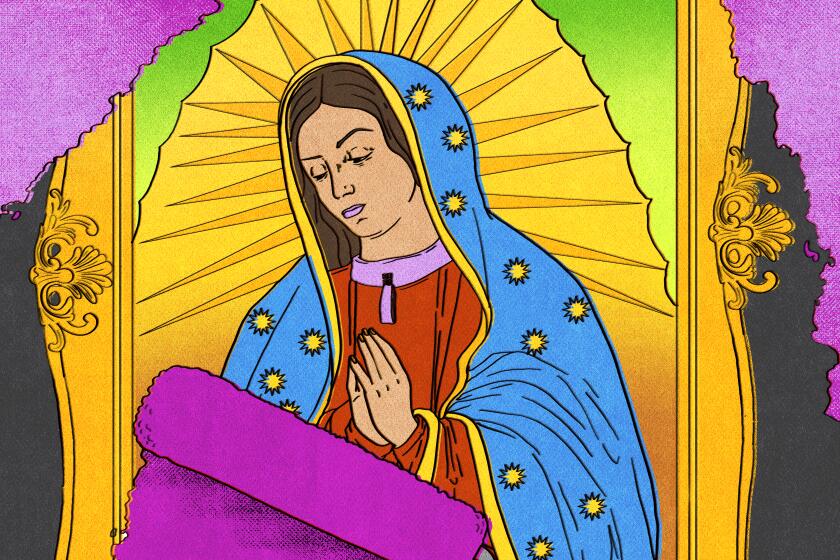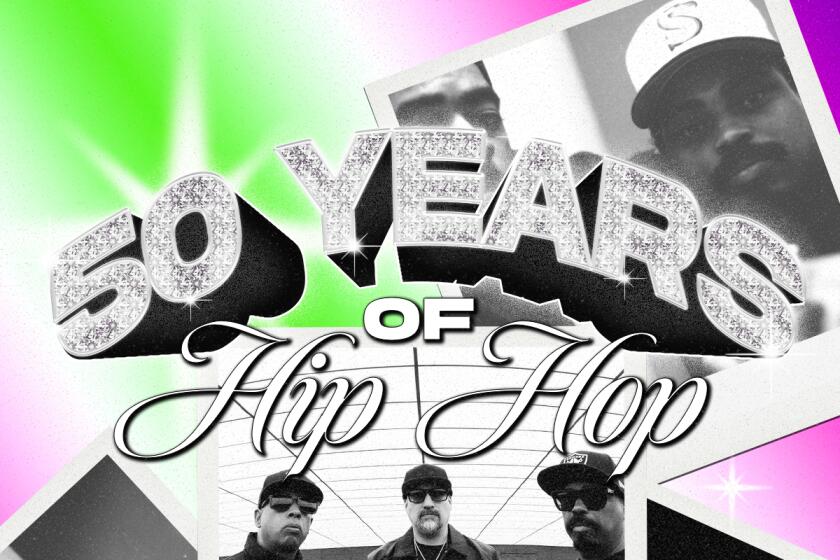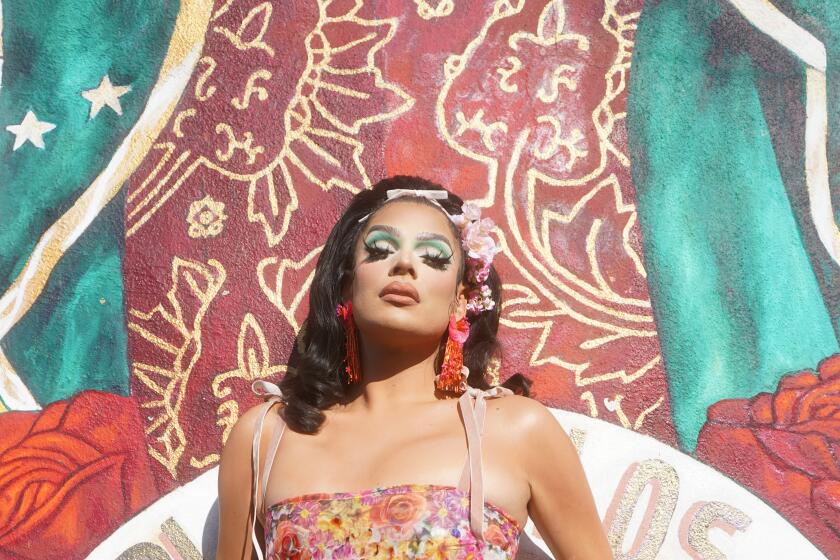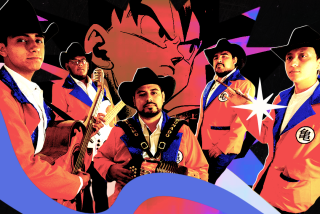
I was in Pátzcuaro, a pueblo mágico in Michoacán, Mexico, when I saw a familiar face. It was late October, and the town was in the throes of preparation for Día de Muertos celebrations. The streets were lined with cempasúchiles and papier-mâché skeletons, and vendors had set up shop selling sugar skulls and other knickknacks associated with the holiday.
There, nestled among a chibi Frida Kahlo purse and a calavera, was a figure from my childhood, rendered in polyresin the way a Catholic saint in my abuela’s house might have been: Goku.
The legendary manga artist died on March 1 after suffering an acute subdural hematoma, his studio announced Thursday.
Utterly delighted, I waved my friend over before snapping a picture. “Look!” I squealed. “It’s my favorite saint!” I always knew Dragon Ball Z, an anime about a spirited warrior defending earth from aliens and magical beings, was popular in Latin America, and that it was something of a meme that anime in general had found an eager audience there. But it was nonetheless a surreal experience to see Goku in Pátzcuaro, a beautiful town that seemed to pride itself on its traditional crafts. It felt, for some reason, like loosening my tie; a breath of fresh air.
I was interested in unpacking why I felt that way. Michoacán had spoiled me in terms of arts and culture. The ceramics, harkening back to techniques developed by the Purépecha, and the cuisine were especially lovely. I had the pleasure of being connected with Cristina Potters, a respected food writer in Morelia, who introduced me to some splendid dishes at La Conspiración de 1809. Was it that I found Morelia and its surrounding pueblos to be too traditional, too reverent of the past, too stuffy?
Well, no. Throughout Morelia, I encountered a real sense of play. In Pátzcuaro, there was a large Día de Muertos ofrenda with a Monster Energy Drink theme, perhaps because someone had passed who really, really enjoyed cracking open a Monster Energy Drink. It makes sense. I would hope my family would have the good sense to set some cold brew atop my ofrenda, so that I am able to complete my journey back from the land of dead to the world of the living without being too cranky.
The inclusion of a Colombian American drag queen has put the National Museum of the American Latino in jeopardy.
Regardless, the more I thought about it, the more I realized my reaction to seeing Goku had little to do with Mexico itself, and more to do with the mythologizing people do about Mexican people in the United States, particularly when it comes to media made for or about them.
There’s a fascinating history worth delving into about anime and Latin America. The popular YouTube channel “Get in the Robot” has a fun explainer that links it to Latin American countries’ reverent treatment of dubs, lack of cuts, which were commonly made in the United States to censor acts of violence, and an open niche in the market for animated shows in lieu of lack of funding for animation in the region. It also digs into Latin Americans’ willingness to engage with shows that weren’t merely episodic in nature, but had long, convoluted plots, due to a steady diet of telenovelas.
And, you know, sure, I could make some sort of case that Dragon Ball Z aligns well with Mexican culture, to cite one country. Goku is a buff man’s man! He loves his family, returns from the land of the dead a few times, adheres strongly to his sense of duty, and so on. But those themes strike me as a bit too universal to really explain the Latin obsession with Goku, which, as mentioned above, has several economic factors at play as well.
No, what I find so fun about the Goku phenomenon in Mexico (again, specifically), about things like Taqueria “Goku,” is that it’s something like the cultural equivalent of one of those computers with a see-through shell, where you can see all the chips and wires displayed. It reminds me of how culture moves, how people will take and run away with certain things, and how any one group of people’s affections can be unpredictable.
Latinx Files: Remembering our contributions to hip-hop, 50 years later
None of this is terribly surprising, of course. Dragon Ball Z, after all, slaps. It’s fun. It’s a good time. It’s powered-up muscleheads duking it out with each other at supersonic speeds, shooting lasers and blowing up planets. What’s not to love?
But as someone who has been in at least a few rooms where execs strategize about how to “reach Latino audiences,” this sort of common sense flies out the window, and I have often experienced discomfort in how the average Latino customer, viewer, or reader in the U.S. is reduced down to a short list of things they’re willing to engage with, as if they are a zoo animal with a very specific diet.
While it can seem cohesive on paper, culture is, upon closer inspection, a mosaic of individuals with heterodox tastes, beliefs, and values. The governing logic for marketing books, TV shows, movies, and so on to Latinos in the United States goes something like this: Latinos place heavy emphasis on family values. They are proud of being Latino, and, thus, the characters ought to talk about being Latino a lot. They come from a machismo culture where men are stoic and gender roles are clearly defined, as per tradition.
This has paved the way for many corny, pandering projects that have failed, thus sustaining the self-fulfilling prophecy that maybe Latinos simply don’t like to buy books, or watch TV, or whatever. It is a waste of time, then, so goes the logic, to greenlight Latino projects, because isn’t that risky? The reality is, though, that Latinos do like engaging with their culture in the media. They just don’t see themselves in stories where everyone is constantly talking about how Latino they are, or where common tropes are shoehorned into every single moment.
Maybe I was right in the beginning. Maybe Goku is something like a saint. To me, he is the patron saint I call on whenever someone tries to tell me that a story isn’t Latino enough because an abuela doesn’t threaten anyone with “la chancla,” or that stories catering to the Latino community won’t work because Latinos don’t like supporting other Latinos.
The co-host of ‘Drag Race Mexico’ sat down with columnist Suzy Exposito to discuss her illustrious television career, her Chicana pride and the freedom of being nonbinary.
The stories just have to be good. They have to resonate. They have to find that line between cultural specificity and universal themes. The things people latch onto, after all, aren’t always tailored to fit perfectly into their (imagined) rigorous criteria for what’s good or what’s bad. Culture can be goofy, can be idiosyncratic, can produce strange phenomena like a taco truck based on a popular anime character, and that’s something to embrace and invite into projects attempting to catch the eye of untapped consumers.
Either that, or just cast Edward James Olmos as Master Roshi in a live action adaptation and pray for the best, I suppose.











